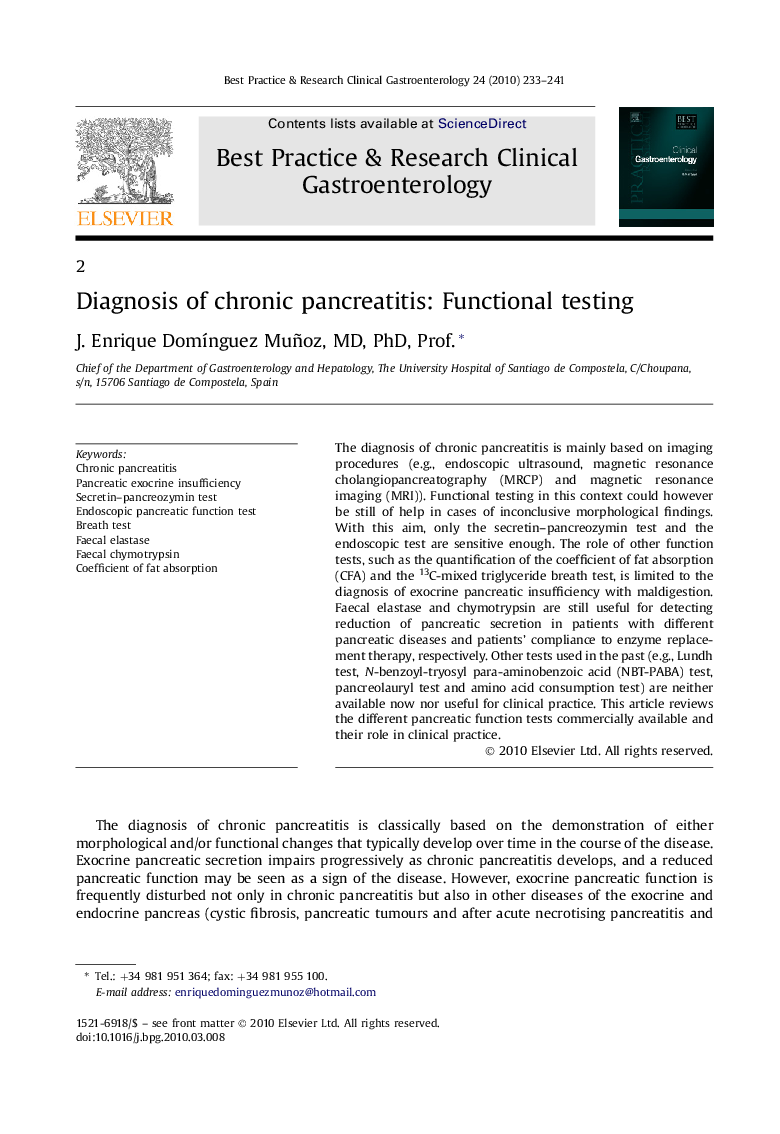| Article ID | Journal | Published Year | Pages | File Type |
|---|---|---|---|---|
| 3254306 | Best Practice & Research Clinical Gastroenterology | 2010 | 9 Pages |
The diagnosis of chronic pancreatitis is mainly based on imaging procedures (e.g., endoscopic ultrasound, magnetic resonance cholangiopancreatography (MRCP) and magnetic resonance imaging (MRI)). Functional testing in this context could however be still of help in cases of inconclusive morphological findings. With this aim, only the secretin–pancreozymin test and the endoscopic test are sensitive enough. The role of other function tests, such as the quantification of the coefficient of fat absorption (CFA) and the 13C-mixed triglyceride breath test, is limited to the diagnosis of exocrine pancreatic insufficiency with maldigestion. Faecal elastase and chymotrypsin are still useful for detecting reduction of pancreatic secretion in patients with different pancreatic diseases and patients’ compliance to enzyme replacement therapy, respectively. Other tests used in the past (e.g., Lundh test, N-benzoyl-tryosyl para-aminobenzoic acid (NBT-PABA) test, pancreolauryl test and amino acid consumption test) are neither available now nor useful for clinical practice. This article reviews the different pancreatic function tests commercially available and their role in clinical practice.
